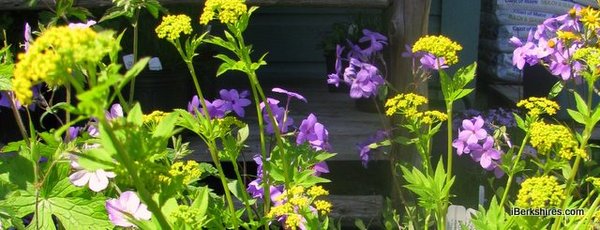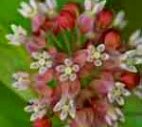|
|

The Return of the NativeBy Nichole Dupont
Special to iBerkshires
04:45PM / Thursday, May 20, 2010
Native plants bring beauty ... and nature into your back yard

In addition to attracting birds and butterflies, native plants add color, diversity and balance to perennial gardens. |
If you ask any green thumb, they will tell you that gardening of any kind requires patience and experimentation. Building a native perennial garden is no exception to this rule. According to Jude Sullivan, propagator and garden planner at Project Native on 342 North Plain Road in Housatonic, there is a lot to consider when venturing out to start a native perennial garden. First and foremost is style.
"You definitely need to decide what style you want," Sullivan said. "You can take native plants and put them into a more traditional setting with other perennials or you can have a garden with only native plants."
While the look of the native garden is a top concern, wildlife should also be a consideration for native plantings.
"More people are beginning to think about wildlife," she said. "They are starting to think in terms of creating habitat, removing lawn and replacing it with meadows. The advantages of having a native garden are that it keeps a better balance for pests and diseases, virtually everything has a role. You're creating a good food web which will ultimately feed the birds and create a butterfly habitat."
The type of wildlife that makes itself welcome in the native garden depends entirely on what plants are there. Sullivan said it is very important to consider what type of soil you have before purchasing native plants and putting them in the ground.
"It's important to assess light conditions. Do you have shade? Dappled shade? Half-day shade? How much moisture is in the ground?" she said. "Feel the soil. Does it feel gritty? The key is to look at what already grows well there and make some determinations based on that."
Sullivan has broken the soil types down into six fairly common categories; Dry soil in full sun, wet soil in full sun, normal soil in part shade, dry soil in mostly shade and wet soil in mostly shade. While many native plants are sensitive to these conditions, she said that others are amenable to just about anything.
"A lot of things cross over," she said. "You can put these plants in multiple situations. Just do your research. Some of the planting is accidental, so just play with it. Try a selection of things the first year and see what does well."
| Native Plants and their preferred conditions |
 Dry soil/full sun: Butterfly weed, little blue stem grass, golden alexander, kinick kinick, black-eyed susan, foxglove beard tongue, wild bergamont Dry soil/full sun: Butterfly weed, little blue stem grass, golden alexander, kinick kinick, black-eyed susan, foxglove beard tongue, wild bergamont
 Wet soil (ditch or a run off)/full sun: Golden groundsel, Joe Pye weed, ironweed, purple butterflyweed, dog's tooth daisy, wool grass, blue flag iris Wet soil (ditch or a run off)/full sun: Golden groundsel, Joe Pye weed, ironweed, purple butterflyweed, dog's tooth daisy, wool grass, blue flag iris
 Normal soil/partly shaded (side of the house, half-day sun): Golden alexanders, summersweet, heart leaf aster, hazelnut, wood phlox, columbine, golden groundsel, geranium, wild stonecrop Normal soil/partly shaded (side of the house, half-day sun): Golden alexanders, summersweet, heart leaf aster, hazelnut, wood phlox, columbine, golden groundsel, geranium, wild stonecrop
 Dry soil/mostly shade: Big leaf aster, wintergreen, nannyberry, mapleleaf viburnum, low bush blueberry, white wood aster, wood fern, Christmas fern Dry soil/mostly shade: Big leaf aster, wintergreen, nannyberry, mapleleaf viburnum, low bush blueberry, white wood aster, wood fern, Christmas fern
 Wet soil/ mostly shade: Summersweet, spicebush, geranium, cinnamon fern, royal fern, high bush blueberry, sensitive fern, ironwood, elderberry Wet soil/ mostly shade: Summersweet, spicebush, geranium, cinnamon fern, royal fern, high bush blueberry, sensitive fern, ironwood, elderberry |
Home & Garden Home
|
|

